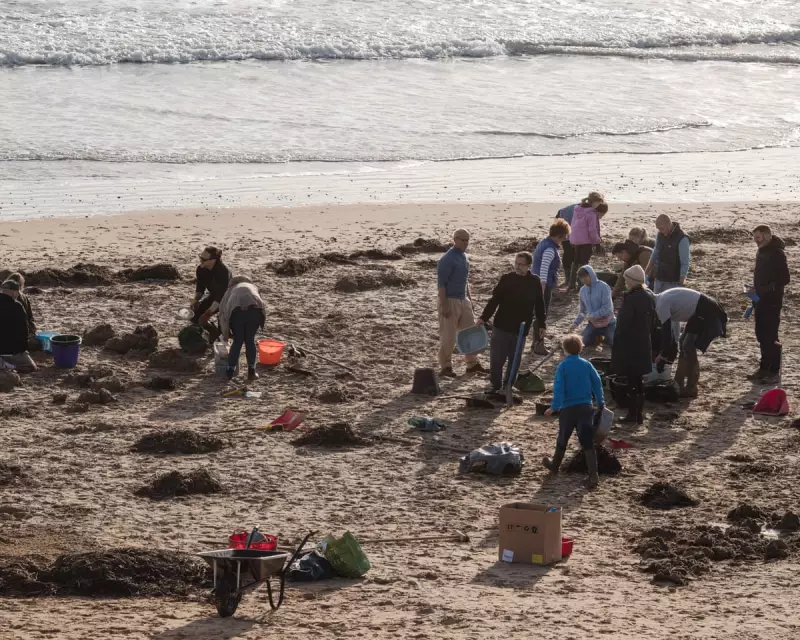
Coastal Crisis: Plastic Bead Pollution Threatens England's Shoreline
An environmental disaster unfolding along England's picturesque south coast has exposed a widespread pollution risk affecting some of the nation's most cherished beaches. Exclusive analysis reveals that at least 15 sewage treatment plants continue using the same plastic bio-beads that caused November's catastrophic spill at Camber Sands, where an estimated 650 million beads contaminated the shoreline.
The Hidden Network of Risky Treatment Plants
Environmental experts are urging immediate action from water companies to modernise outdated facilities, warning that current practices risk permanent environmental damage and marine wildlife fatalities. These sewage works, predominantly located in coastal communities across Sussex, Cornwall, Devon and Dorset, employ billions of floating plastic beads to purify wastewater through a process creating biofilm layers.
The Guardian's investigation has mapped the concerning scale of this issue for the first time, discovering that neither the government nor regulators maintain records of which water companies use these beads, their locations, or quantities in operation. A government spokesperson confirmed this oversight, stating it remains "a matter for water companies".
Immediate Dangers and Long-Term Consequences
The recent Camber Sands incident demonstrates the vulnerability of this system. Southern Water has apologised for the spill caused by a failed mesh screen and committed to cleanup operations, but the beads have already spread along the coastline, contaminating beaches from Hastings to Dungeness and embedding themselves in shingle and salt marshes.
Rob Abrams of Surfers Against Sewage highlighted the severity: "Once released, bio-beads behave like any other microplastic: they can be ingested by fish, seabirds and shellfish, enter the food chain, carry harmful pollutants on their surface, and pose risks to human health."
These plastic beads contain concerning levels of polycyclic aromatic hydrocarbons linked to cancer, alongside toxins including lead, antimony and bromine. Their particular danger increases once in marine environments, where they attract algae and smell like food to sea creatures, leading to ingestion and potential poisoning.
Water Companies' Response and Responsibility
John Penicud, Southern Water's wastewater managing director, acknowledged that newer plants since the early 2000s use membrane technology instead of beads, but cited government focus on sewage pollution as limiting retrofitting of older sites. "Where we have put forward cases for how we can retrofit some of these sites instead, our focus from government has been to continue to improve the environment by reducing discharges," he explained.
Meanwhile, South West Water has chosen to replace smaller beads with larger versions at its eight affected plants rather than phasing out the technology entirely. A spokesperson stated: "Decommissioning these plants is very costly as it requires the whole treatment process to be completely replaced."
Campaigners remain deeply concerned. Claire Wallerstein of the Cornish Plastic Pollution Coalition warned: "We are very concerned that South West Water is using new beads to extend the use of these old wastewater plants beyond the end of their planned 30-year lifespan – we fear this is a recipe for potential disaster."
The affected coastal communities, many among England's most deprived areas, face prolonged environmental damage from both recent and historical spills. Volunteers still find beads from a major 2010 spill near Truro, demonstrating the persistent nature of this pollution.
Helena Dollimore, MP for Hastings and Rye, demanded accountability: "Southern Water must urgently explain how they will ensure an incident like this never happens again. These beads are contaminating some of our most precious habitats." With rising sea levels and increasingly extreme weather patterns, the risk of further catastrophic failures continues to grow, putting England's coastal environment in perpetual jeopardy.





